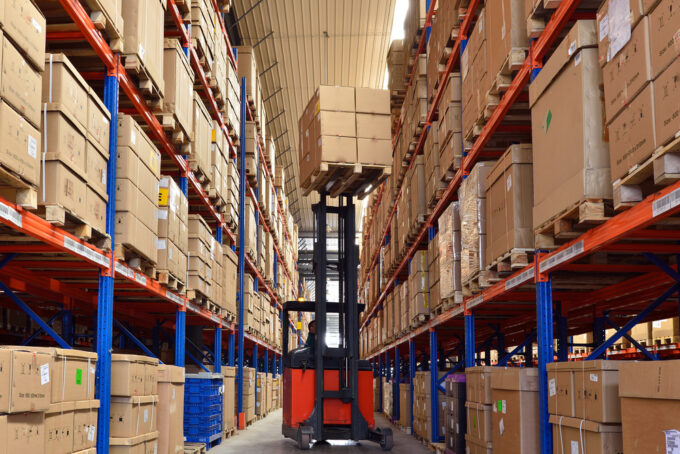Warehouse efficiency is crucial for any business that relies on storing and managing inventory. An efficient warehouse can lead to increased productivity, reduced labor costs, and improved customer service.
However, achieving and maintaining warehouse efficiency can be challenging, especially for business owners who are not familiar with the best practices and latest technologies in the field.
Therefore, it is highly beneficial for one business to cooperate with reliable and professional warehouse consulting services. In this article, we will provide ten tips for business owners looking to improve warehouse efficiency.
Why Is Warehouse Efficiency Important for Your Business?
- First, it can help to increase productivity by streamlining operations and reducing the time and effort required to complete tasks. This can lead to faster turnaround times and improved customer service.
- Second, it can help to reduce labor costs by automating repetitive tasks and reducing the need for manual labor. As a result, you will get lower overhead expenses and improved profitability.
- Third, it can help to improve the accuracy of inventory data by implementing a warehouse management system and utilizing barcoding and RFID technology. In other words, you will achieve better inventory management and reduced stockouts.
- Fourth, it can help to increase storage capacity by optimizing the layout of the warehouse and utilizing vertical space. This can lead to increased revenue and growth.
- Fifth, it can also help to improve safety in the warehouse environment by implementing lean principles, providing proper training, and utilizing automation and robotics. By focusing on warehouse efficiency, a business can achieve better results and remain competitive in the marketplace.
Optimize Your Layout

The first step in improving warehouse efficiency is to optimize the layout of your warehouse. This includes organizing your inventory in a logical and accessible manner, as well as considering the flow of goods through the warehouse.
By reducing the distance that goods need to travel, you can decrease the amount of time and effort required to pick, pack, and ship orders. Additionally, you should consider the use of vertical space, such as using mezzanine or multi-level shelving, to increase storage capacity without increasing the footprint of the warehouse.
Implement a WMS (Warehouse Management System)
A warehouse management system (WMS) is a software application that can help you manage and optimize your warehouse operations. A WMS can help you track inventory levels, automate order picking and packing, and improve the accuracy of your inventory data. In other words, with WMS, you can reduce the amount of manual labor required to manage your warehouse and increase the efficiency of your operations.
Utilize Automation and Robotics
Another way to improve warehouse efficiency is to utilize automation and robotics. Automated storage and retrieval systems (ASRS) can help you quickly and accurately retrieve items from storage, while robotic picking systems can help you automate the process of picking items from shelves.
Using automation and robotics] will definitely reduce the amount of time and effort required to complete repetitive tasks and increase the overall efficiency of your warehouse.
Improve Employee Training

One of the most important aspects of warehouse efficiency is having well-trained employees. Proper training can help your employees work more efficiently and reduce the number of errors that occur in the warehouse.
By providing ongoing training and development opportunities, you can ensure that your employees are up-to-date on the latest best practices and technologies in the field.
Implement a Cycle Counting System
A cycle counting system is a method of inventory management that involves regularly counting and verifying a small subset of your inventory, rather than counting everything at once.
Implementing a cycle counting system will ensure that your inventory data is accurate and up-to-date at all times. This can help you avoid stockouts, reduce the amount of time and effort required to manage your inventory, and improve the overall efficiency of your warehouse.
Utilize Barcoding and RFID
Another way to improve warehouse efficiency is to utilize barcoding and RFID technology. Barcode scanners and RFID readers can help you quickly and accurately track inventory levels and movement throughout your warehouse.
Despite that, these technologies can reduce the amount of manual labor required to manage your inventory and increase the accuracy of your inventory data.
Utilize Conveyors and Automated Guided Vehicles

Conveyors and automated guided vehicles (AGVs) can help you move goods more efficiently throughout your warehouse. Conveyors can be used to move items from one location to another, while AGVs can be used to transport items between different parts of the warehouse.
This type of innovation can reduce the amount of manual labor required to move goods and increase the overall efficiency of your warehouse.
Implement Lean Principles
Lean principles, such as those used in Lean manufacturing, can help you improve warehouse efficiency by reducing waste and increasing efficiency.
This can include implementing practices such as 5S (sort, set in order, shine, standardize, and sustain) to organize and maintain the warehouse, implementing Kanban systems to manage inventory levels and workflow, and using value stream mapping to identify and eliminate inefficiencies in the warehouse process. By implementing lean principles, you can increase productivity and reduce costs in your warehouse.
Use Real-Time Data to Monitor Performance
Using real-time data to monitor performance can help you identify areas of inefficiency and make adjustments to improve warehouse efficiency.
This can include using data to track inventory levels, monitor employee productivity, and measure the performance of your warehouse management system. In other words, with real-time data, you can make informed decisions to improve warehouse efficiency and achieve better results.
Continuous Improvement

Finally, it is important to remember that warehouse efficiency is not a one-time process, but rather a continuous journey. It is important to regularly review and evaluate your warehouse operations and make improvements as necessary.
This includes monitoring performance, seeking feedback from employees, and staying up-to-date on the latest technologies and best practices in the field. By continuously improving your warehouse operations, you can ensure that your warehouse remains efficient and effective over time.









